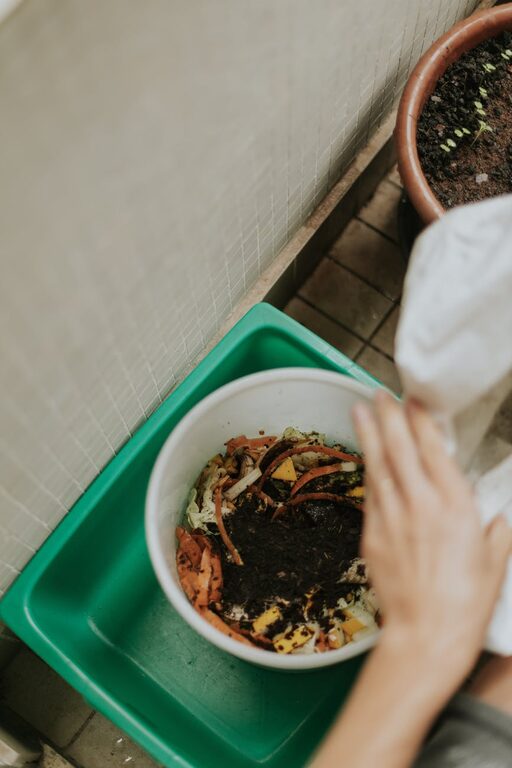Composting at home is a rewarding way to turn kitchen scraps and yard waste into nutrient-rich soil for your garden. It not only reduces household waste but also promotes a healthier environment. If you’re new to composting, this guide will help you get started with simple, effective tips to make the process smooth and enjoyable.
What Is Composting?
Composting is the natural process of recycling organic material, such as food scraps and garden waste, into a dark, crumbly substance known as compost. This “black gold” improves soil quality by adding nutrients and enhancing its ability to retain moisture.
Why Compost at Home?
– Reduce Waste: Diverting organic waste from landfills reduces methane emissions, a potent greenhouse gas.
– Enrich Soil: Compost supplies plants with essential nutrients, reducing the need for chemical fertilizers.
– Save Money: Using your compost means less spending on soil conditioners and fertilizers.
– Support Biodiversity: Healthy soil supports beneficial microbes, insects, and earthworms crucial for garden health.
Getting Started: Basic Composting Supplies
You don’t need fancy equipment to start composting. Here’s what you’ll need:
– Compost Bin or Pile: You can buy a compost bin or create a simple pile in your backyard.
– Organic Waste Containers: A small indoor container with a lid for collecting kitchen scraps before transferring them outside.
– Basic Tools: A garden fork or shovel to turn and aerate your compost occasionally.
What Can You Compost?
Knowing what materials to add is key to a successful compost pile.
Greens (Nitrogen-rich materials)
– Fruit and vegetable scraps
– Coffee grounds and filters
– Tea bags (without synthetic materials)
– Fresh grass clippings
– Plant trimmings
Browns (Carbon-rich materials)
– Dry leaves
– Straw or hay
– Shredded paper and cardboard
– Small branches or twigs
– Sawdust (from untreated wood)
What to Avoid
– Meat, dairy, and oily foods (attract pests)
– Diseased plants or weeds that have gone to seed
– Pet waste
– Chemically treated wood or paper
Step-by-Step Guide to Composting at Home
1. Choose the Right Spot
Place your compost bin or pile in a well-drained, shady area with good airflow. This helps maintain moisture and temperature levels favorable for composting.
2. Layer Your Materials
Start with a layer of coarse materials like small branches or straw to aid airflow. Then alternate between greens and browns in layers about 2 to 4 inches thick. Aim for a ratio of approximately 2 to 3 parts browns to 1 part greens.
3. Keep It Moist
The compost should feel like a damp sponge—not too dry or soggy. If it’s dry, sprinkle some water. If it’s too wet, add more dry browns.
4. Turn Your Pile Regularly
Every week or two, use a garden fork or shovel to turn the compost. This aeration speeds up decomposition by allowing oxygen to reach the microbes.
5. Be Patient
Depending on conditions, compost can take anywhere from 2 months to a year to fully mature. When it looks dark, crumbly, and smells earthy, it’s ready to use.
Troubleshooting Common Compost Issues
– Smelly Compost: Often too wet or lacking oxygen. Turn the pile and add dry brown materials.
– Compost Not Heating Up: May need more greens or a larger pile. Smaller piles struggle to retain heat.
– Pests: Avoid adding meat or oily foods; use a closed bin if pests are a problem.
Tips for Small-Space Composting
If you live in an apartment or have limited outdoor space:
– Use a Worm Bin (Vermicomposting): Worms break down food scraps quickly indoors.
– Try Bokashi Composting: This method ferments kitchen waste quickly without odors.
– Consider Community Composting: Some neighborhoods have shared compost sites.
Using Your Compost
Once ready, mix your finished compost into garden beds, use it as mulch, or add it to potted plants. It will improve soil structure, provide nutrients, and promote healthy plant growth.
Final Thoughts
Starting a home composting practice is a simple and eco-friendly way to reduce waste and enrich your garden. With a bit of patience and regular care, you can create your own organic soil amendment right in your backyard. Happy composting!

